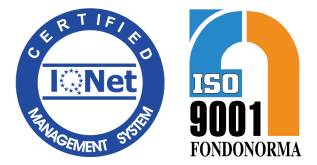Biological agents are an ever-present presence in both the workplace and everyday life. However, due to their often invisible nature, the associated risks are frequently underestimated. Therefore, it is essential to assess exposure to these agents in the workplace to minimize their effects and consequences.
The Spanish National Institute for Safety and Health at Work (INSST) defines biological agents as microorganisms, including genetically modified ones, cell cultures, and human endoparasites, capable of causing infections, allergies, or toxicity. Exposure to biological agents can lead to acute and chronic diseases, some of which can be potentially fatal, with serious socioeconomic implications.
WORK EXPOSURE
The European Agency for Safety and Health at Work (EU-OSHA) explains that biological agents are present in both the environment and work settings. Exposure can occur when workers come into contact with:
- Natural or organic materials such as soil, clay, and plant materials (hay, straw, cotton, etc.).
- Animals and animal-derived substances (wool, fur, etc.).
- Food items (products, molds, yeast).
- Organic dust (flour, paper dust, animal dander, pollen).
- Waste and wastewater.
- Blood and other bodily fluids.
INSST states that biological agents encompass microscopic living organisms like viruses, bacteria, human endoparasites, fungi, cell cultures, and unconventional transmissible agents (prions). The definition also includes substances released by these biological agents that could be pathogenic to humans, such as endotoxins, mycotoxins, exotoxins, glucans, ergosterol, etc., as long as their presence in the work environment is a result of the biological agent’s activity.
Workplaces with higher potential for exposure to biological agents include primary agriculture, food processing, wood processing, healthcare, biofuel power plants, waste treatment, and research.
CLASSIFICATION OF BIOLOGICAL AGENTS
EU-OSHA classifies biological agents into four risk categories based on their potential to cause diseases and the possibilities for prevention and treatment:
- Biological Agent Group 1: Unlikely to cause human disease.
- Biological Agent Group 2: Can cause human diseases and poses a risk to workers; unlikely to spread to the community and generally has effective prophylaxis or treatment available.
- Biological Agent Group 3: Can cause severe human diseases and poses a serious risk to workers; may pose a risk of community spread, but generally has effective prophylaxis or treatment available.
- Biological Agent Group 4: Causes severe human diseases and poses a serious risk to workers; may have a high risk of community spread and generally lacks effective prophylaxis or treatment.
HEALTH EFFECTS
EU-OSHA indicates that the health effects of biological agents include infections, zoonotic diseases, upper and lower respiratory symptoms, occupational asthma, sensitization, allergic reactions, systemic effects, poisoning, and cancers. Biological agents can cause a wide range of adverse health effects, including infections caused by parasites, viruses, fungi, or bacteria; allergies and acute or chronic respiratory symptoms due to exposure to mold and organic dust like flour, animal dander, enzymes, and mites; poisoning or other toxic effects through endotoxins.
These agents can enter the human body through various routes, such as damaged skin or mucous membranes, inhalation, ingestion, animal bites, the urogenital tract, and injuries from punctures, stings, and cuts.
PREVENTING OCCUPATIONAL DISEASES
In any activity involving a risk of exposure to biological agents, employers are obligated to assess the health or safety risks for workers and establish preventive measures.
Directive 2000/54/EC outlines the principles of risk assessment, prevention, and control of biological agents. Employers must:
- Evaluate the risks posed by biological agents.
- Reduce risks for workers through elimination, substitution, prevention, and control of exposure.
- Inform and train workers.
- Provide health surveillance as appropriate.
Strategies for assessing and managing risks from biological agents can vary based on the nature of the process and activity involved.
Source: European Agency for Occupational Safety and Health (EU-OSHA)
El Instituto Nacional de Seguridad y Salud en el Trabajo de España (INSST)






